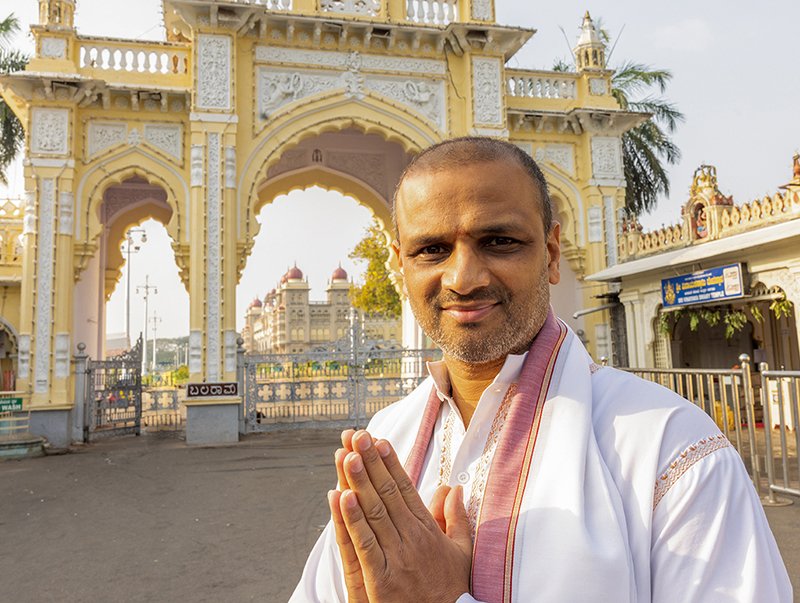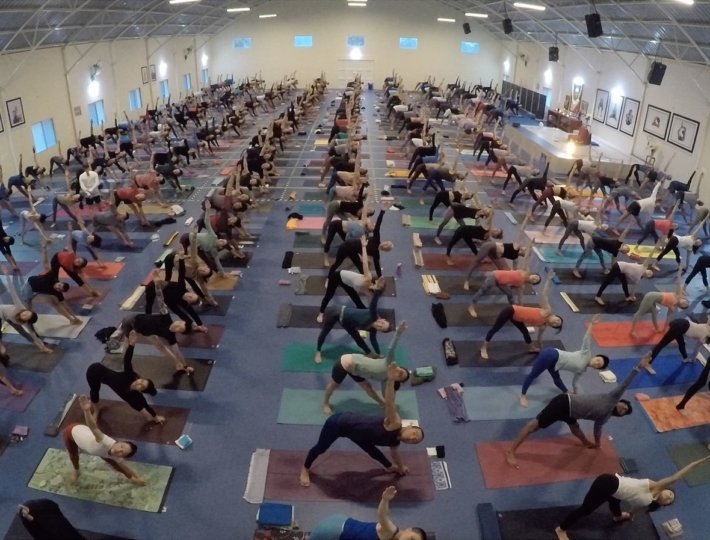The intersection of technology and meditation can be a difficult crossroad to navigate. Constant connectedness is a facet of modern life that often comes at the expense of our ability to reflect and create mental space, and therefore the use of technology to aid contemplative practice may be counterintuitive and is sometimes controversial.
Soren Gordhamer, founder of Wisdom 2.0, a conference that explores the relationship between contemplative practice, technology, and business, recently told Anderson Cooper in an interview on 60 Minutes, “What people are realizing is that constant connectivity is great for part of the day, but if you do it your entire day you’re more stressed, you can’t sleep, you’re less present with your kids, and they’re hungry for … some kind of contemplative space in [the] day.”
When Vincent Horn, host of the Buddhist Geeks podcast, started meditating, he says his teachers viewed technology and the world of technology as, in some ways, antithetical to the contemplative life. “[In their view] these technologies just distract and fragment you; that’s all their good for.” It was an “act of rebellion” on Horn’s part to begin to explore the ways that Buddhism, science, and technology converge.
Meanwhile, the Dalai Lama is an advocate for bringing science, technology, and one’s spiritual path together, going so far as to say that Buddhism should change its claims when science can conclusively demonstrate them to be false. Neuroscientists have researched meditation for many decades, starting primarily with Transcendental Meditation in the 1960s and 70s. Since 1987, momentum in the field has increased thanks in part to the Mind and Life conferences, which facilitate collaboration between academic scientists, the Dalai Lama, and other Tibetan monks and scholars to help build bridges between meditation and biology, neuroscience, and cognitive science. Out of the basic scientific research into meditation’s effects has naturally emerged a wave of technological applications to help people learn to meditate or enhance their practice.
Some of these products are fairly straightforward adaptations of the time-tested structures for meditation instruction and practice. For example, using videos to teach to people online and message boards for communities to gather and discuss their practices. These are old foundations of practice, now given an extended reach. Other applications however, are more novel and technologically involved. At the institutional level, for example, Judson Brewer and his lab at the University of Massachusetts have developed fMRI and EEG tools to measure brain activity in real-time and provide feedback to help optimize contemplation. Consumer enterprises like Interaxon and HeartMath, offer affordable EEG and heart rate-sensing hardware and software with instructions for using them to improve meditation.
Related: A Simple Guide to the Complex World of Meditation
Outside of commercial and institutional enterprises, amateur technologists and hackers are also active in this space. Mikey Siegel, an engineer and graduate of the MIT Media Lab, and the cofounder of the Transformative Technology Lab at Sofia University, hosts “Consciousness Hacking” Meetups in the San Francisco Bay area and has recently expanded to New York City to organize, develop, and promote the community of techno-yogis.
For consumers, mobile apps are some of the most prevalent and easily accessible meditation products on the market. If you search the Apple App Store, you will find 360 “meditation” apps and 447 for “mindfulness.” Many of them are timers that use sounds and visual elements to represent the how long you have been meditating. Some remind you to weave in mindful moments throughout your day. Others help you start and maintain a committed meditation practice. Here are a few standout programs that you may find useful:
Insight Timer (Free): This app features a variety of high-quality recordings of meditation bells to help you begin and end your practice. It also features guided sessions by many well-known meditation teachers such as Jack Kornfield, Tara Brach, and Eckhart Tolle, and it “gamifies” your progress to encourage continued practice. You can also use the app to connect to other users all around the world.
Mind (Free): This is “just” a meditation timer but its simple design and elegant aesthetic make it a standout in the app marketplace.
Headspace (Free to download, $7.99 per month): Ideal for beginners and casual meditators, this app features meditations of different lengths for health, relationships, and performance, written and recorded by former Buddhist monk Andy Puddicombe. The program is free to start, but a subscription allows you to access longer courses and additional techniques.
Omvana (Free to download, $1.99+ per meditation): This app offers thousands of guided meditations for various situations produced by an array of independent experts from diverse backgrounds. Omvana also lets you record your own meditation or relaxation tracks set to background music.
While many applications may offer an entry point for new practitioners, some of the experts we spoke with had doubts about whether technology-aided meditation could ever be as powerful as classical meditation “technologies”. According to Jon Mitchell, managing editor at Burning Man and author of In Real Life: Searching for Connection in High-Tech Times, a new book on mindfulness and technology, the tools available to consumers are still too simplistic to accurately represent and feedback information more useful than that of your own rich sensory experience. He is also concerned with what he calls the “dependency drawback.” Traditional teachings are internalized through texts and personal instruction. When your meditation practice requires an Internet connection, electricity, a digital community, and an iPhone, it’s harder to practice independently. “If your analytics become your mantra, then how can you practice without them?” he asks.
We will find out in time whether technology-aided meditation can overcome these hurdles. It’s clear that there is a great deal of creative energy in the space, and pioneers in the field say that neuroscientific applications for meditation may soon make dramatic leaps in their effectiveness and widespread use.
This is the first of a two-part examination of technology-aided meditation. Check back next month to learn more about its potential risks and benefits.








Comments (1)